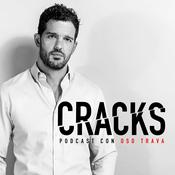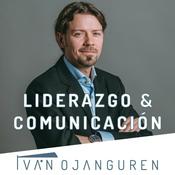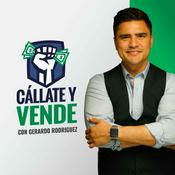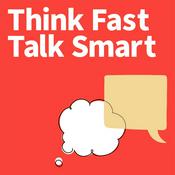432 episodios

Nothing Has a Right to Exist in Your Portfolio | What the Last 15 Years Has Taught Us
24/12/2025 | 57 min
In the latest episode of Click Beta, Matt Zeigler, Dave Nadig and Cameron Dawson take a look back at 2025 and a look forward to 2026. Subscribe to Click Beta via the links below. Follow Click Beta:Spotifyhttps://open.spotify.com/show/0u1fxie4C4vHXIJPUMhvUsApple Podcastshttps://podcasts.apple.com/ky/podcast/click-beta/id1793929457YouTube:https://www.youtube.com/excessreturns

The Existential Spending Battle | Adrian Helfert on What You’re Missing in the AI Arms Race
21/12/2025 | 1 h 1 min
In this episode of Excess Returns, we sit down with Adrian Helfert of Westwood to discuss how investors should be thinking about portfolio construction in a market shaped by artificial intelligence, high levels of concentration, shifting interest rate dynamics, and evolving economic signals. The conversation covers how AI-driven capital spending is changing return profiles across markets, why traditional investing rules are breaking down, and how investors can balance growth, income, and risk in an uncertain environment. Adrian shares his framework for understanding return drivers, his views on market concentration and valuation, and how to think about diversification, macro risk, and income generation going forward.Main topics covered• How Westwood frames portfolio construction around capital appreciation, income, and event-driven returns• Why AI spending is both a major opportunity and a growing existential risk for large companies• The sustainability of market concentration and what it means for future returns• Whether higher interest rates really hurt growth stocks the way investors expect• How massive data center and AI capital expenditures could translate into productivity gains• The case for market broadening beyond the Magnificent Seven• Why traditional recession indicators have failed in recent cycles• How inflation, labor markets, and Federal Reserve policy interact today• Rethinking the classic 60/40 portfolio and the role of private markets• Using covered calls and active income strategies to manage risk and generate yieldTimestamps00:00 Introduction and near-term opportunities versus long-term risk02:40 Capital appreciation, income, and event-driven investing framework06:30 Have markets structurally changed to support higher returns09:30 Intangible assets, AI, and margin expansion10:20 The scale of AI and data center capital spending13:00 Productivity gains and return on investment from AI16:00 AI as both opportunity and risk for companies19:30 Market concentration and diversification concerns23:30 Will market leadership eventually broaden25:30 Growth stocks, duration, and interest rates29:30 International diversification and global investing33:30 Why recession indicators have failed39:00 Inflation outlook and Federal Reserve policy46:00 Rethinking the 60/40 portfolio53:00 Enhanced income strategies and covered calls59:00 One investing belief most peers disagree with

The Precarity Line | Ben Hunt and Adam Butler on the Broken Math of the American Dream
19/12/2025 | 1 h 19 min
In this special episode, Adam Butler and Ben Hunt join Matt Zeigler to unpack one of the most charged debates in markets and economics today: whether our official statistics still reflect lived reality. Building on Mike Green’s work and Adam Butler’s essay The Bureau of Missing Children, the conversation moves beyond the technical definition of poverty to a deeper idea of economic precarity, the growing gap between what we measure and what people actually experience. Together, they explore debt, housing, childcare, labor mobility, AI, and the erosion of meaning in economic language, while wrestling with what policy, community, and human-centered solutions might look like in a world that increasingly feels unstable.Main topics coveredWhy the debate should focus on precarity rather than povertyThe disconnect between inflation statistics and lived experienceHow debt, housing, childcare, and education drive economic insecurityThe idea of a participation budget for modern family formationWhy labor mobility has broken down since the financial crisisHow asset prices and credit intensify risk for householdsThe role of grandparents and off-balance-sheet support in the economyDarwin’s wedge, positional goods, and rising costs of everyday lifeThe impact of AI, technocracy, and anti-human incentivesCentralized versus decentralized solutions to today’s economic challengesWhat it means to carry the fire and preserve human-centered valuesTimestamps00:00 Introduction and the emotional roots of the precarity debate02:00 Poverty versus precarity and what we are really measuring06:30 Technocrats, narratives, and the limits of economic statistics09:00 Personal experiences with precarity and debt15:00 The Bureau of Missing Children and family formation economics21:00 Modeling household income and participation budgets25:50 Rising costs of childcare, housing, and everyday life33:00 Darwin’s wedge and positional competition36:45 Debt, housing, and labor immobility40:00 Grandparents, unpaid care, and off-balance-sheet subsidies46:30 How today differs from 40 or 50 years ago49:40 Labor mobility as a lost engine of opportunity55:00 Policy paths, mission-driven economics, and decentralization01:11:00 Visionary leadership versus bottom-up solutions01:15:50 Carrying the fire and preserving meaning01:17:30 Where to follow Adam Butler and Ben Hunt

The Alpha No Human Can Find | David Wright on Machine Learning's Hidden Edge
17/12/2025 | 1 h 1 min
In this episode of Excess Returns, we sit down with David Wright, Head of Quantitative Investing at Pictet Asset Management, for a deep and practical conversation about how artificial intelligence and machine learning are actually being used in real-world investment strategies. Rather than focusing on hype or black-box promises, David walks through how systematic investors combine human judgment, economic intuition, and machine learning models to forecast stock returns, construct portfolios, and manage risk. The discussion covers what AI can and cannot do in investing today, how machine learning differs from traditional factor models and large language models like ChatGPT, and why interpretability and robustness still matter. This episode is a must-watch for investors interested in quantitative investing, AI-driven ETFs, and the future of systematic portfolio construction.Main topics covered:What artificial intelligence and machine learning really mean in an investing contextHow machine learning models are trained to forecast relative stock returnsThe role of features, signals, and decision trees in quantitative investingKey differences between machine learning models and large language models like ChatGPTWhy interpretability and stability matter more than hype in AI investingHow human judgment and machine learning complement each other in portfolio managementData selection, feature engineering, and the trade-offs between traditional and alternative dataOverfitting, data mining concerns, and how professional investors build guardrailsTime horizons, rebalancing frequency, and transaction cost considerationsHow AI-driven strategies are implemented in diversified portfolios and ETFsThe future of AI in investing and what it means for investorsTimestamps:00:00 Introduction and overview of AI and machine learning in investing03:00 Defining artificial intelligence vs machine learning in finance05:00 How machine learning models are trained using financial data07:00 Machine learning vs ChatGPT and large language models for stock selection09:45 Decision trees and how machine learning makes forecasts12:00 Choosing data inputs: traditional data vs alternative data14:40 The role of economic intuition and explainability in quant models18:00 Time horizons and why machine learning works better at shorter horizons22:00 Can machine learning improve traditional factor investing24:00 Data mining, overfitting, and model robustness26:00 What humans do better than AI and where machines excel30:00 Feature importance, conditioning effects, and model structure32:00 Model retraining, stability, and long-term persistence36:00 The future of automation and human oversight in investing40:00 Why ChatGPT-style models struggle with portfolio construction45:00 Portfolio construction, diversification, and ETF implementation51:00 Rebalancing, transaction costs, and practical execution56:00 Surprising insights from machine learning models59:00 Closing lessons on investing and avoiding overtrading

The 100 Year Thinkers | Chris Mayer and Robert Hagstrom on the Dangers of Abstraction
15/12/2025 | 1 h 13 min
In this episode of our new show The 100 Year Thinkers, Robert Hagstrom, Chris Mayer, Bogumil Baranowki and Matt Zeigler explain how investors get trapped by labels, abstractions, and simplistic models, and why breaking free with better mental models, language, and long-term thinking is a real edge in markets.Subscribe on Spotifyhttps://open.spotify.com/show/5IsVVM27KWP6SUW6KN2ifeSubscribe on Apple Podcastshttps://podcasts.apple.com/us/podcast/the-100-year-thinkers-long-term-compounding-in-a-short-term-world/id1845466003Subscribe on YouTubehttps://youtube.com/@excessreturns
Más podcasts de Economía y empresa
Podcasts a la moda de Economía y empresa
Acerca de Excess Returns
Escucha Excess Returns, CREATIVO y muchos más podcasts de todo el mundo con la aplicación de radio.net

Descarga la app gratuita: radio.net
- Añadir radios y podcasts a favoritos
- Transmisión por Wi-Fi y Bluetooth
- Carplay & Android Auto compatible
- Muchas otras funciones de la app
Descarga la app gratuita: radio.net
- Añadir radios y podcasts a favoritos
- Transmisión por Wi-Fi y Bluetooth
- Carplay & Android Auto compatible
- Muchas otras funciones de la app


Excess Returns
Descarga la app,
Escucha.







































